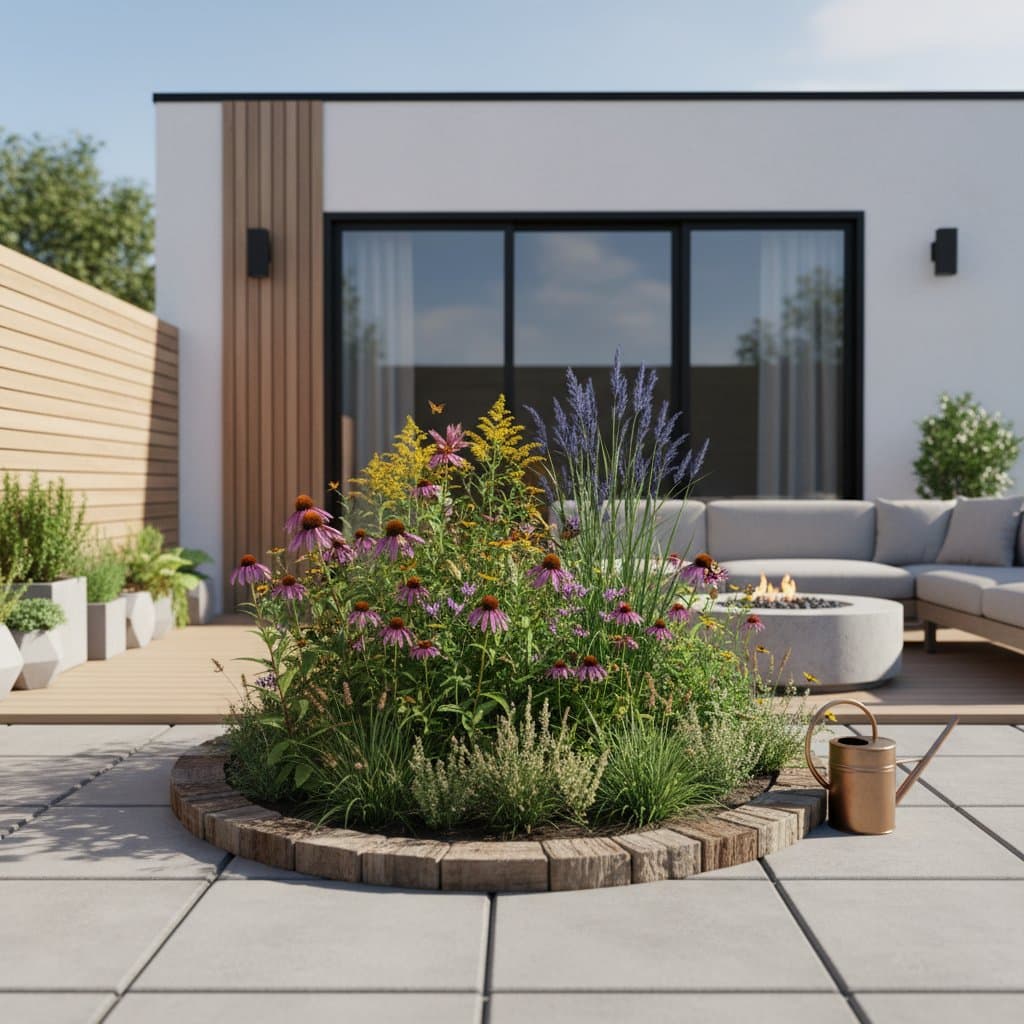Introduction to Pocket Meadows
Urban living often limits outdoor space, yet even a modest patch of ground holds potential for natural beauty. A pocket meadow, planted with native wildflowers and grasses, offers a low-effort alternative to traditional lawns. These small-scale landscapes support local wildlife, require minimal watering, and evolve with the seasons to provide ongoing visual interest.
Native plants thrive in regional conditions, reducing the need for fertilizers or pesticides. Pollinators such as bees and butterflies flock to these blooms, enhancing biodiversity in city settings. With proper planning, anyone can establish such a feature in hours, then enjoy years of effortless appeal.
Selecting the Right Location
Begin by identifying a sunny area that receives at least six hours of direct sunlight daily. Native wildflowers perform best in full sun, though some mixes tolerate partial shade. Measure your chosen spot; even 10 to 20 square feet suffices for noticeable impact.
Assess the site's exposure to foot traffic and proximity to structures. Avoid areas under eaves where runoff might carry chemicals. Test the soil type by digging a small hole: sandy soils drain quickly, while clay holds moisture longer. This evaluation ensures your meadow matches the environment.
Preparing the Soil
Clear the area of existing grass, weeds, and debris using a shovel or sod cutter. For small spaces, a garden fork works effectively to loosen the top six inches of soil. Remove rocks and roots to create a smooth bed.
Improve soil quality by incorporating two inches of compost across the surface. Rake it in gently to blend with native earth. This step boosts nutrients without overwhelming the balance needed for wildflowers. Allow the prepared area to settle for a few days before planting.
Sowing the Seeds
Choose a seed mix tailored to your region, containing at least five native species like black-eyed Susan, coneflower, or little bluestem grass. These combinations ensure diversity and resilience. Scatter seeds evenly by hand, aiming for light coverage without clumping.
Press seeds into the soil using a board or your feet, then water thoroughly to settle them. Cover lightly with a thin layer of straw or fine mulch to retain moisture and deter birds. Germination typically occurs within two to three weeks under ideal conditions.
Safety Tips
Check for underground utilities before any digging exceeds a few inches. Contact local services to mark lines and prevent accidents.
Restrict access to the area for children and pets until seedlings grow several inches tall. This protects tender plants from disturbance.
Steer clear of chemical herbicides, which harm emerging wildflowers. Opt for manual removal of weeds instead.
Troubleshooting Common Issues
Sparse Germination
If fewer than half the seeds sprout, reseed the area lightly with the original mix. Ensure the soil remains damp during this process to aid establishment.
Weed Encroachment
Address weeds promptly while the ground stays loose. Employ a hand trowel to extract entire root systems and minimize regrowth.
Uneven Plant Growth
Taller varieties can overshadow shorter ones. Midway through the growing season, prune excess stems to distribute sunlight more evenly.
Dry Areas
Apply a half-inch layer of compost to affected spots and irrigate slowly. This promotes deeper root penetration and better moisture retention.
Ongoing Maintenance
Established meadows demand little attention, allowing nature to take the lead.
Mow or trim annually to a height of four inches. This practice curbs woody invaders and refreshes the planting.
Remove invasive weeds upon sighting to preserve the native composition.
Retain seed heads over winter months. They provide nourishment for birds and add structural interest.
Skip fertilizers beyond the initial year. Such additions favor non-natives and disrupt ecological balance.
Chop trimmings finely and return them to the soil as natural mulch. This recycles nutrients efficiently.
Storing Supplies
Preserve unused seeds in a sealed jar or paper envelope in a cool, dry location. Include a label detailing the species for future reference.
Clean and dry garden tools after use to avoid rust formation. Store them in a protected spot.
Bundle any remaining straw and elevate it off the ground in a shed or container to prevent mold.
Budget and Time Considerations
Establishing a 20-square-foot meadow costs between 25 and 60 dollars. Expenses vary with seed variety and compost type.
Initial setup requires two to three hours, followed by brief daily watering for the first few weeks. Yearly maintenance involves under an hour of trimming.
Over time, this method proves more economical than lawn upkeep. It eliminates ongoing mowing, watering, and chemical treatments.
Seasonal Care Guide
Early spring calls for gentle raking to clear winter debris and expose emerging shoots to light.
During midsummer droughts, provide supplemental water to safeguard young roots from stress.
In late autumn, allow stalks to stand for wildlife habitat. Cut them back just before spring growth resumes.
Seasonal shifts reveal varied blooms, ensuring the meadow remains visually dynamic year after year.
Consulting Professionals
Compacted soil or inadequate drainage may require expert intervention. Engage a native landscape designer or soil specialist for analysis.
These professionals test soil composition and recommend targeted improvements. For elevated installations like rooftops, consult an engineer regarding load capacity and water flow.
When seeking assistance, pose these inquiries:
-
Which native plants align with my site's light and soil profile?
-
What depth is necessary for the planting bed to support root development?
-
What upkeep routine suits a compact meadow design?
Essential Steps to Start
Select a sunny site and clear it immediately.
Acquire a regional native seed blend featuring multiple species.
Irrigate gently and observe the initial green shoots emerge.
Embrace this simple project to foster a sustainable, lively addition to your urban oasis. The rewards extend beyond aesthetics to ecological contributions and personal satisfaction.


